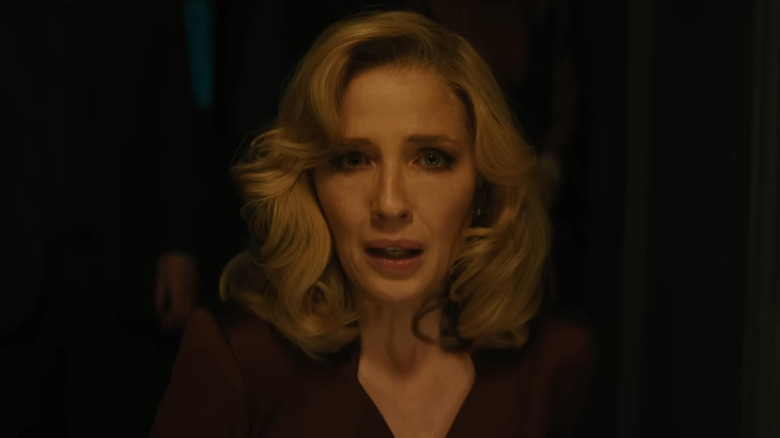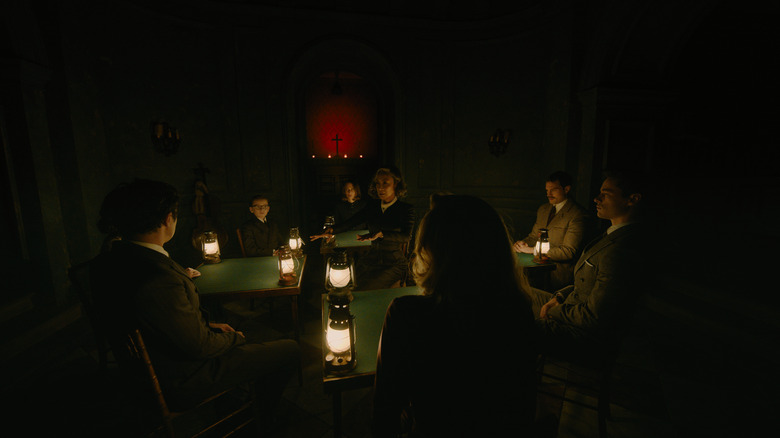Does A Haunting In Venice Have A Lot Of Jump Scares?
Though Kenneth Branagh's latest outing as Hercule Poirot will likely draw comparisons (favorable and otherwise) to its source material, there's at least one thing the "Belfast" director brings to "A Haunting in Venice" that Agatha Christie couldn't to "Hallowe'en Party" — jump scares. Many, many jump scares.
Of course, the legendary English mystery writer would have struggled to execute the horror genre's most common and commonly maligned trope in prose. The modern controlled visual medium obviously gives Branagh an unfair edge over Christie. After all, Branagh starred in Christopher Nolan's "Oppenheimer," a technical marvel that practically simulated a nuclear bomb, while Christie, on the other hand, died in 1976. That was the same year Dino De Laurentis spent north of £3.5 million on an animatronic ape for "King Kong," only for it to explode and be replaced by a man in a gorilla suit.
Yet for all of the luscious visuals Branagh's "Venice" has to offer, the director curiously relies on audial jump scares that would rival box office competitor "The Nun II" in sheer volume. This refers to both the stupefying amount of times the gimmick is employed, as well as the violent decibels reached by everything from slamming doors to squawking birds. Suffice it to say, audio-sensitive viewers and those frustrated by jump scares should probably steer clear of Poirot's latest caper. But for those looking for a rather tense cinema experience, "Venice" beckons.
Is A Haunting in Venice a horror movie?
For many moviegoers, the fact that Kenneth Branagh's "A Haunting in Venice" has any jumpscares at all will qualify it as a horror film — it is trying to scare you, after all. For the creative team, however, the answer to this question is a bit more complicated. Though neither Branagh nor screenwriter Michael Green have spoken publicly about their film (in solidarity with the SAG-AFTRA and WGA strikes), several others responsible for the final product offered their perspective in an interview with The Direct about the movie's tricky genre-bending murder mystery.
Production designer John Paul Kelly was keenly aware of how important his role in creating the physical environment of the film was in defining its tone, wanting to avoid turning the film's central Venetian palazzo into a one-note haunted house. He said that his team wanted the space to evoke more than just fear. On the other hand, composer Hildur Guðnadóttir (best known for her chilling and Oscar-winning work on Todd Phillips' "Joker") embraced the combination of mystery and horror with excitement, further discovering that the natural sounds of the period worked exceptionally well with the genre blend. "[T]hese extended techniques of wind instruments, for example, lend themselves very well to the horror genre...," she said. "A lot of these sounds that are happening at [that] time... [make] for great material for good jump scares." That they do, Ms. Guðnadóttir.
Most revealingly, producer James Pritchard shared that Branagh and Green had chosen "Hallowe'en Party" as their next target specifically because of the spookier tone. "They wanted to play a little bit with the horror genre," he said, "and they felt a 'Hallowe'en Party' was a great launchpad into that."

